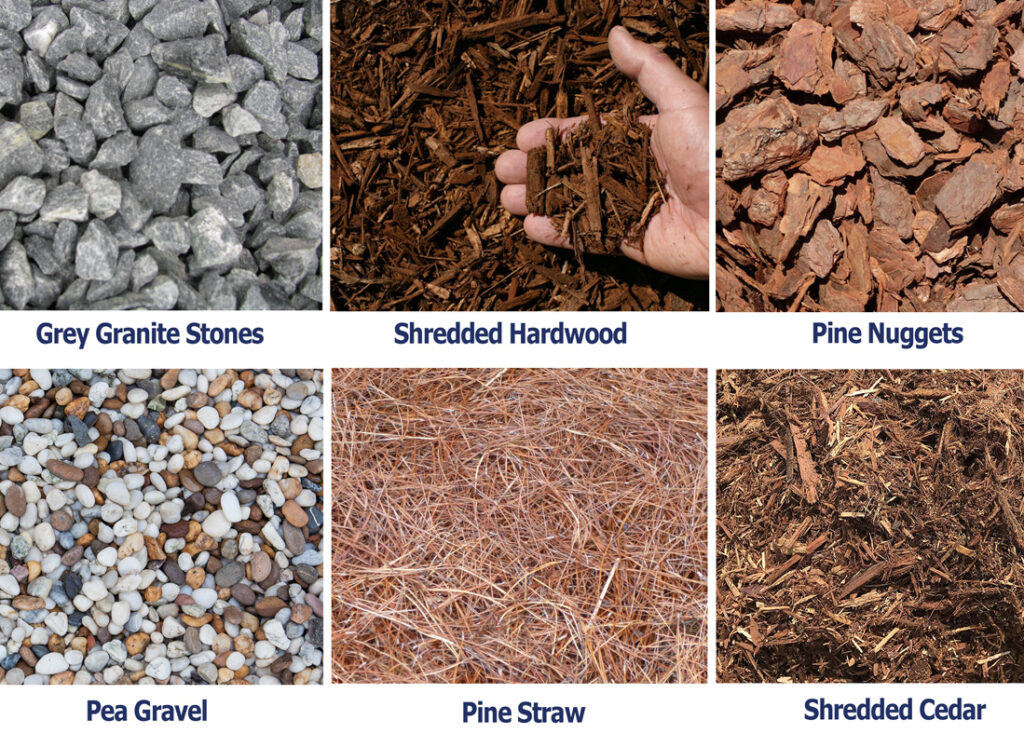Mulch. So misunderstood, yet so vital for your garden. Most of us don’t put much thought into what color we choose, the types available, or its many virtues. For example, did you know that mulch is a natural weed suppressor? It’s a great option if you prefer not to use pesticides. And, it helps to retain moisture around the base of plants and provides additional nutrients for the soil as it decomposes over time.
Time to shine a light on one of your garden’s best friends!
Types of Mulch
Each variety of mulch has its own qualities and best uses.
Shredded Bark: Made from woods like cedar and pine, this material is perfect for gardens on a slope. Another advantage is that it enriches your garden’s health by decomposing into the soil.
Pine Straw: It’s a little-known fact that pine straw is only available in the south. Pine straw is also ideal for sloped gardens because needles tend to hold well in place. This is a popular selection for azaleas, conifers, blueberries, and other acid-loving plants.
Bark Nuggets: Because they are less likely to wash away, bark nuggets work well for flat gardens. You don’t need to reapply it as quickly as shredded bark or pine straw because nuggets don’t break down as quickly. The bottom line is that it can save your bottom line.
Leaves/Grass: Free is a good virtue and mulch created from shredded leaves or grass clippings fits the bill. Be sure to avoid using chemically treated grass clippings, especially for edible plants.
Landscape Rocks: Pea pebbles, marble chips, granite stones and river rocks don’t break down, which means they don’t need to be reapplied annually. On the negative side, they provide no nutrients and require serious labor to remove if you opt for a different mulch type down the line.
Rubber Mulch: Skinned knees won’t happen on your watch when you lay rubber mulch in areas children play. It’s a sturdy and sustainable material for your garden and maintains its color extremely well.
Regardless of your mulch material of choice, the rule of thumb is to apply a 3-inch layer of mulch to your garden. For new gardens, be sure to start with weed preventer, followed by landscape fabric and top it off with garden soil and mulch.
Choose Your Colors Carefully
Depending on your preference, your mulch can either blend in so as not to steal the spotlight from your plants or can accentuate and highlight them. Mulch typically comes either in black, brown, or red. Choose a color that does not work against the color of your flowers. Black and brown are popular to help your flowers stand out in contrast to the mulch. Black mulch works well for gray and contemporary homes while brown is better suited for red brick homes. Red is a great choice if your exterior features terra cottas, golds, and warm tones.
Next time you prepare to lay mulch in your garden, consider all its virtues and the value of choosing the right color for your home. Once you do, you’ll join us in appreciating the quiet hero — mulch.



